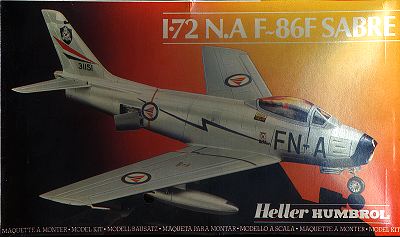
KIT # | 271 |
PRICE: | $6.00 at the time of initial review. |
DECALS: | Depends on which boxing you get |
REVIEW BY: | |
NOTES: |

HISTORY |
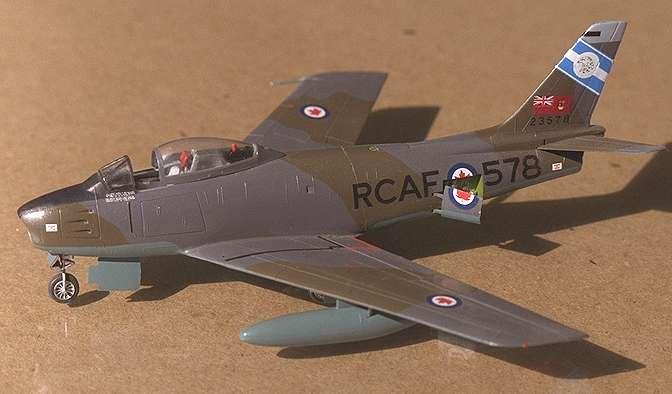
The F-86 Sabre jet was born from the Navy's FJ-1 Fury and the information garnished from German aerodynamics experts concerning the benefits of the swept wing. It can claim much of its ancestry in the Messerschmitt P.1101 project, an aircraft which never flew but which was enlarged to become the Bell X-5.
The Sabre jet was the premier USAF fighter from about 1949 until the advent of the Super Sabre in the mid-1950s. Due more to its ruggedness and pilot training than to inherent superiority, the F-86A and F-86E had an excellent kill ratio against the slightly superior Mig-15 during the Korean conflict. The H version soldiered on in the guard until the early 1970's
THE KIT |
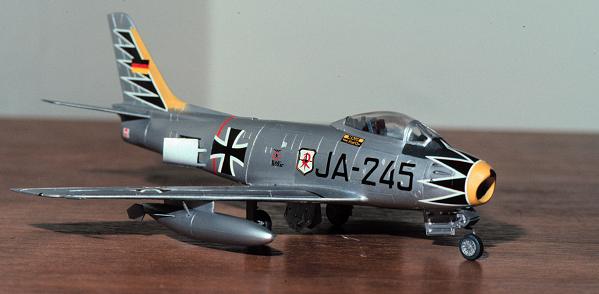
Heller's kit of the F-86E Sabre was molded in the late 1970s and was considered by many to be the best F-86 kit in 1/72 at the time. It's only real competition was the Hasegawa F-86F-40 which suffered from a very poor nose section. The kit has finely detailed, raised panel lined and contained a very nice cockpit with accurate seat and raised details on the instrument panel and consoles. It also offered opening speed brakes, but like all 1/72 Sabre kits, the angle of the open brakes was incorrect and didn't give the sit of the original aircraft. Another option was a two piece canopy which allowed one to pose the Sabre with the canopy open. Like all Sabre kits, it is a tail-sitter unless weight is placed in the nose.
One thing that may concern the real Sabre buffs is that there is only one wing available. That is the narrow chord slatted version with the cranked pitot tube. This wing was fitted to all early models including all E's and a few F's. Many Korean War Sabres as well as those exported had the '6-3' wing and/or a small fence on the wing. Having said that, this makes probably all the examples shown to have incorrect wings. Oh Well!!
CONSTRUCTION |
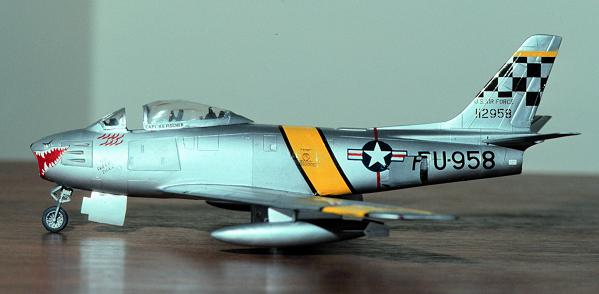
Building the Heller Sabre is pretty straightforward. The cockpit is the first component to be built and room needs to be found for the nose weight. There are only a few areas of concern regarding this kit. One is the nose itself. It can be difficult to place properly and may require some filler around it to blend it in with the fuselage around it. Another area is the aft part of the wing where some filler may also be required. The biggest problem area and one that is difficult to fix is the windscreen. It is slightly larger than the area on which it fits. I know of no fix for this other than sanding down the windscreen and rescribing it. That is why you will find most of my Heller F-86s with the canopy open.
PAINT & DECALS |
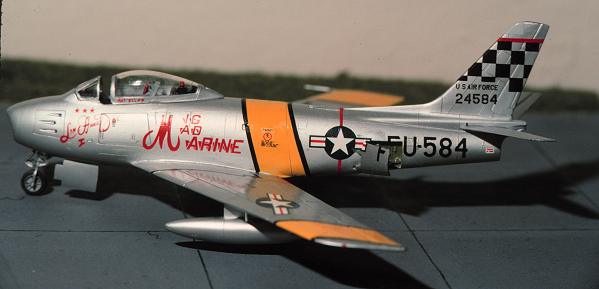
Depending on which boxing you get there are several decal options. One offers a Bundeswaffe version with the tulip markings on the nose and an American Korean War aircraft which was flown by John Glenn. Another version offers Norwegian AF markings. I have found that the quality of the decals differs from boxing to boxing. The Bundeswaffe sheet was superb. Nice, glossy decals with good adhesion. Other sheets are very flat and do not stick as well, though both sheets will respond to setting solutions.
As you can see from the illustrations accompanying this article, there are a myriad of aftermarket decals available. Sheets are available from Superscale, Modeldecal, Carpena and others.
CONCLUSIONS |
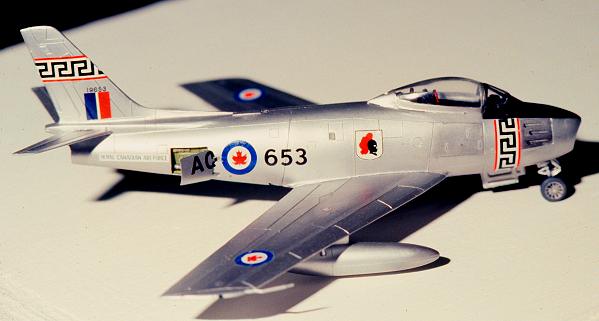
Still a great kit. Though not as detailed as the Fujimi version, should be easier to find and a lot less expensive. As you can see, I have built a number of them over the years and really like them.
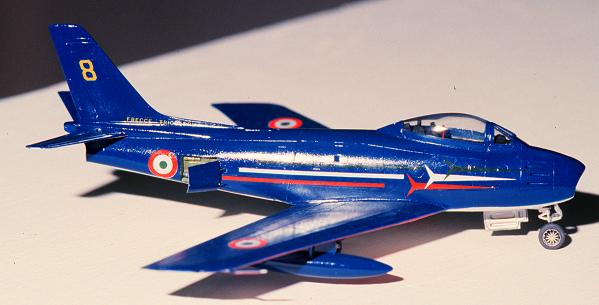
2012 Update: I should take this time to mention that you have to be very careful if you want total accuracy with your Heller Sabre. As you can see, these all have slatted wings and are not appropriate to some of the markings schemes provided. This is especially true of the German plane, which does not have the additional 'sugar scoop' lower fuselage intakes. My only excuse is that at the time, I did not know of these differences and thought everything was just fine.